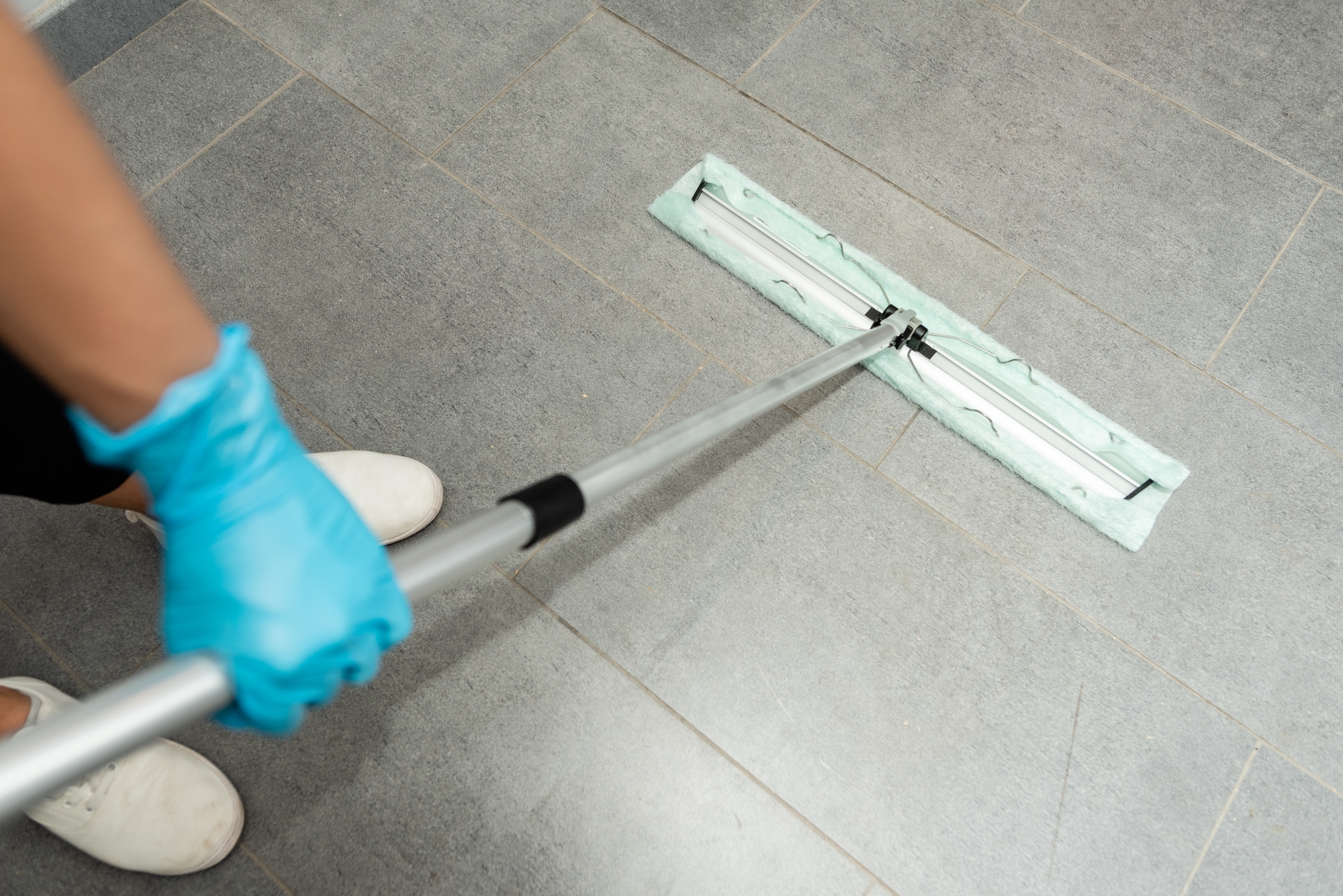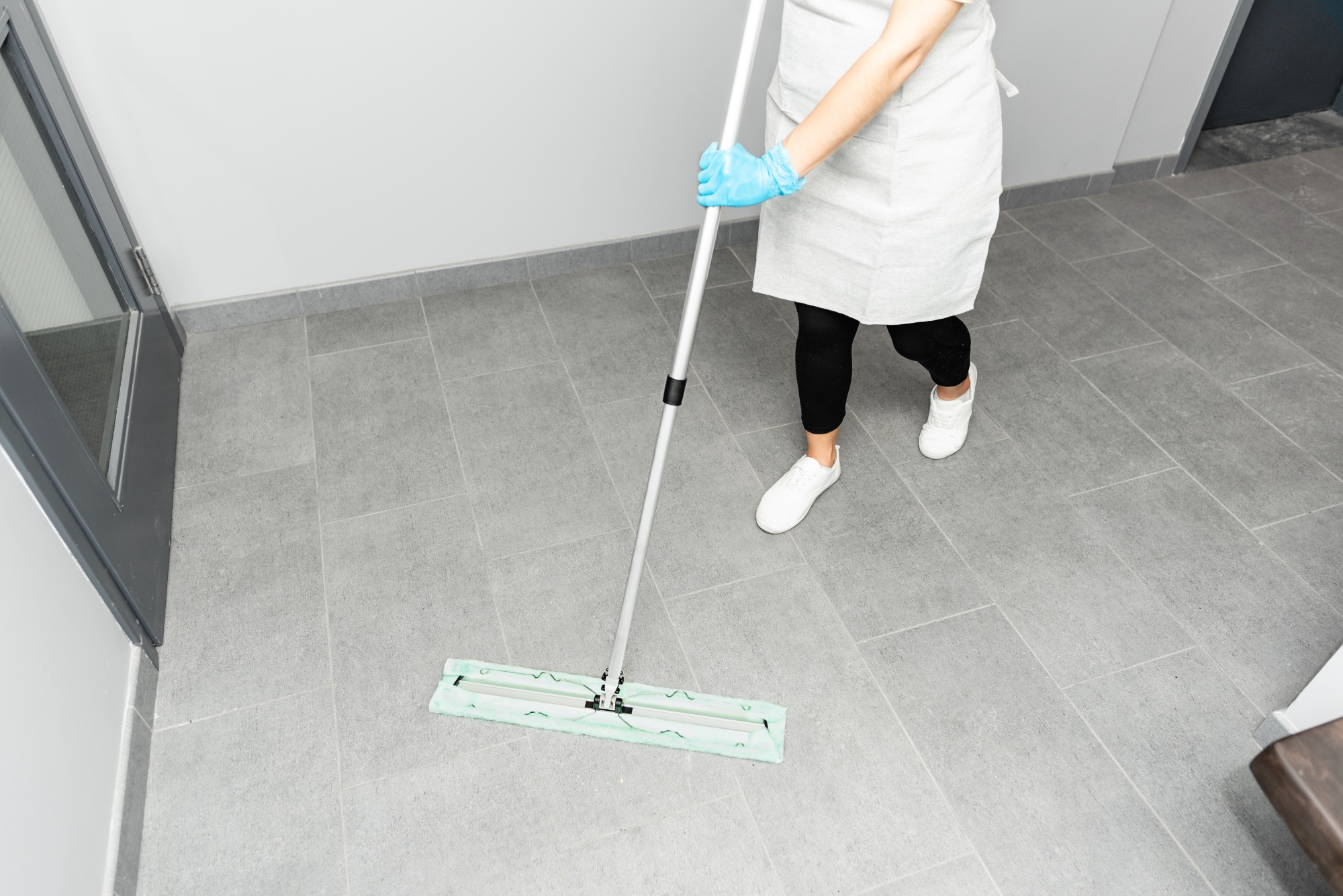Two mops to choose from
Simplify cleaning with
Vivelle mop systems

The Most Efficient and Cost-Effective Mopping Solution
Dirt is not only unsightly and unhygienic but can also be a cause of increased allergies and other health issues. Dust and bacteria, which account for 80% of all dirt in buildings, are a fact of life and their control is at the heart of all cleaning.
The question is which cleaning system is the most efficient and cost-effective solution?
The disposable VIVELLE DYNAMOP® and the VIVELLE BIOMOP® were primarily developed for the dry cleaning of hospital rooms and health care facilities but their attributes are being recognized in other areas, covering airports, schools, showrooms, sports halls, hotels, shops, clean rooms as well as the home.
With a reasonably smooth hard surface, there are no limits to where they can be used, including walls and ceilings as well as floors.
2 Mops to Choose From
Hygienic, dry and value for money
DYNAMOP (1971-)
The original micro fibre, hygienic and economical dry mop. Disposable, environmentally friendly and no water or chemicals are required.
How the Vivelle Mops Function
Pathogenic bacteria such as MRSA and E.coli cannot survive once picked up by the pile fibers creating a 'super hygienic' mop which reduces the potential for cross-infection and enhances existing cleaning practices. It retains all the features of the original Dynamop and will act against bacteria from its production to its final cleaning station.
While not, in textile terms, strictly microfiber materials they function exactly the same way in that a short-life electrostatic charge is generated when the polyethylene fibers slide across a hard surface, drawing dust, dirt, pollen, hair and bacteria into the fiber matrix. The Dynamop and Biomop are more effective than standard disposable microfiber mops due to their fiber structure.
The polyethylene blend of the fiber-matrix has been carefully formulated to obtain the best compromise between dust pick-up and acceptable frictional properties. They require no water or chemicals to be effective, nor do they need to be impregnated with a tackifier or mineral oil to ensure dirt pick-up or entrapment, which in both cases will leave a film on the floor. The dust collected is held in the leading edge of the mop. When this initial area of the mop is fully loaded the new dirt will be pushed further towards the back and this continues until the whole mop surface is loaded.
At this point, the mop will be pushing the detritus around rather than entrapping it and consequently needs to be changed. The area that each individual mop will clean will depend upon the original cleanliness of the floor itself and the hygienic considerations involved. Ward cleaning in hospitals requires the use of a mop for each ward/room to avoid the potential for cross-infection.
Operator Friendly
Vivelle Offers a Lightweight Solution vs Other Mops
The Vivelle Mops are lightweight and operator friendly, weighing approximately 0.8 kg including holder, handle and mop and is therefore easy on the back, shoulders and wrists reducing the risk of injury. This compares with 1.9 kg for a reusable micro fiber mop and 3.5 kg for a standard wet loop mop.
Advantages of Dry Cleaning Floors
Wet cleaning with chemicals and water is still the most commonly used floor cleaning system in the world. Although microfiber mops have recently led to less water being needed, nevertheless, a wet scum film is always left.
Research has highlighted, time and time again that where dry mopping is practiced, lower MRSA infection rates are achieved and overall hygienic arguments for using dry, rather than wet, cleaning are also well documented.
This is totally logical as bacteria and different forms of micro-organisms need a moist and warm environment to multiply. Even experienced cleaners will be unable to lift all the soiled water from the surface, leaving moisture in grooves, cracks and the grain of the floor, with a dirt skim providing nutrients to encourage bacteria growth. Contrary to some contemporary thinking and especially in Health Care, the dry cleaning method is more hygienic than the wet.
To prove this and cover concerns on the effectiveness of our dry disposable system, a ward was first cleaned by the conventional wet cleaning method then re-cleaned dry with the Vivelle mop. In each case the Vivelle mop would clearly pick-up the residue of dust and dirt.
However, when the same test was done in reverse order, the conventional wet mop was not able to capture more dust and dirt beyond the capabilities of the Vivelle product. In practice, with a dry-cleaning system, janitorial staff are advised to carry a spray bottle of cleaning solution to use on stubborn spots such as coffee and blood.

The Vivelle Mop vs Conventional Microfibers
In the opinion of 65% of the members of the UK Society of Healthcare Cleaning Professionals (survey 2011), microfibers have made the greatest contribution to improving healthcare hygiene in the past five years, when compared to conventional materials and methods.
The advantage of reusable microfiber mops over the normal wet mop systems is the lower usage of water and chemicals, the improved hygiene levels attained and the slightly better productivity achieved. The Vivelle disposable mop systems virtually eliminate the use of water and chemicals, apart from persistent dirt spots, without negatively impacting on the immediate cleanliness levels of the floors, while at the same time approximately halving the labour time/costs. By using a dry method, bacteria growth after cleaning will be slower than following wet cleaning of any form as the warm and wet conditions, inherent in the latter, aid their exponential growth.
Disposable microfiber mops do exist but they are virtually two dimensional and do not have the dust pick-up capability of the Vivelle materials; in effect redistributing dirt rather than picking it up.
Vivelle is a division of Atlas Graham Furgale
Copyright © 2025 Vivelle. All Rights Reserved.




